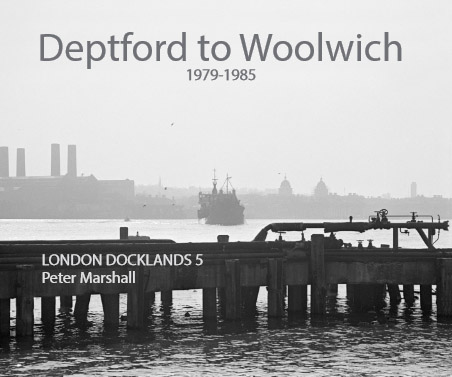
Available soon
I’ve been busy the last few days, not just with taking pictures as usual, but getting my latest Blurb book ready for publication. You can see the cover of it above, and I’lll post more when its available on-line.
It’s taken me four or five months to select the images from the scans I made a year or two ago, and retouch them. There are around 80 images in the final selection, with around ten of those that I initially selected omitted for various reasons. On average each of those 80 images will have had about an hour’s work done on it.
The scans are large TIF files, typically 7250 x 4850 pixels and around 68Mb, large enough to make good prints (so long as the negatives are sharp) up to around 24″ wide, though I seldom print that big. Working on the full-size files takes longer but makes retouching less visible, though some have considerable damage, mainly from insect infestation, that needs repair.
Tiny bugs live on gelatin, making tracks, excreting and also leaving body parts embedded in the negatives. They are a variety of booklice or ‘psocids’ of which more than 5,500 species have been identified, though these are smaller than most – and could even be a previously unknown type.
I first encountered them years ago in my darkroom, when looking through the focussing microscope I found a small creature wandering around my image and looking back at me. At first I thought I was hallucinating, but was soon able to convince myself it was real. But it was some years before I realised the significance of what I had seen, and by the time I got around belatedly to treating the infestation it was far too late. The little bugs had wrought havoc and almost certainly left.
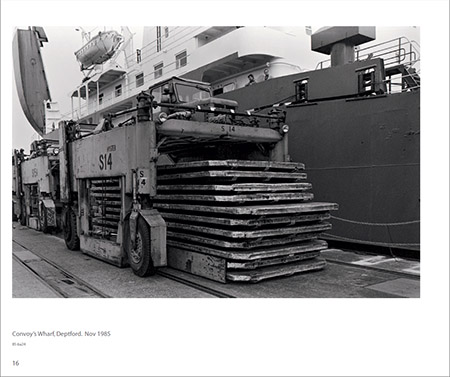
Rather annoyingly I also found some of the scans suffered from Newton’s Rings. It’s hard to get rid of these entirely, but I did work a little to reduce their impact.
Once the big files are ready and adjusted for contrast and brightness etc, a couple of Photoshop actions then produce files with the correct specifications for book production. The TIF files are 16 bit with Gray Gamma 2.2 profile, and I have a RIP which prints from these. For Blurb I want smaller files and I generate these as 8 bit CMYK jpegs with the Blurb ICC profile, adding a little slight warming on the way.
Absolutely neutral files printed through Blurb can sometimes end up with just a hint of green or blue in the blacks, just enough to annoy me, though most viewers would probably not notice. Adding just a little warmth should keep the prints neutral or slightly warm, which is far more to my taste. In the darkroom my favourite papers – in the old days Agfa Record Rapid – had slightly warm blacks.
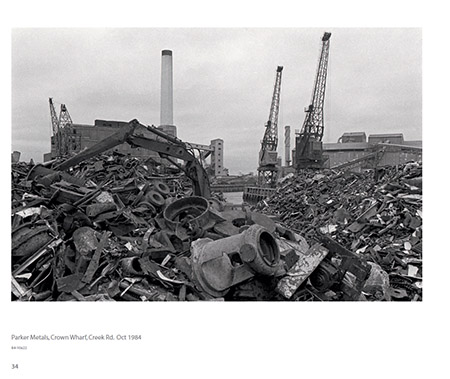
With all the material – titles, text, captions, images – to hand, the actual putting the book together generally isn’t a very long process. Book design can take a while, and some photo books – particularly those that win prestigious prizes – are now more about the designer’s art than the photographers work.
My books aren’t like this. I aim for a simple basic design that shows the pictures and presents essential information. In this book I wanted one image per page, along with the caption (place, date) and also my file reference and a page number. I dislike having to turn to a list at the back of the book to find out the basic details, but don’t want them to compete too much with the image. And I want to show the pictures as large as possible while still maintaining a decent border.
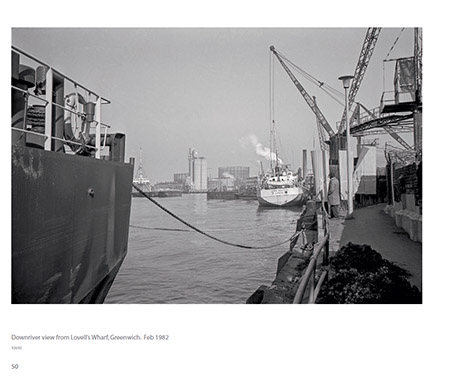
There is also the problem of using both landscape and portrait images. I’d like both to be the same size, but this is a problem with a 10×8″ book. Since most of the pictures are landscape format I’ve chosen to make a landscape format book. The landscape images are around 22x15cm and the portrait images 20x14cm, which gives them a similar weight.
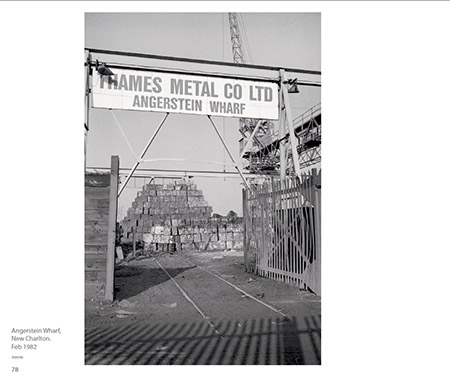
This latest book is the fifth and last in my ‘London Docklands‘ series from the 1970s to the mid 80s and I’ve gradually evolved a format which I think works, and so most of the design is already there, with type styles and layouts that can be re-used. The next one with different material may need more design thinking. But I’ll probably still keep it simple.
Blurb actually have some fairly good software available for free download that I used for my first few books, but it’s a little difficult to get things exactly how you want them. So I decided to use Adobe InDesign, which I’d actually used the first version of years ago when I taught a little (very little) DTP, as I could get a fairly cheap upgrade to InDesign CS5.5, which would also enable me to edit my old Pagemaker files. Blurb supply a plugin which makes it easy to use for making their books. InDesign does also enable me to produce my own PDFs, though though the published one is made by Blurb and available on their web site.
As with other recent books, it will officially be published as a PDF (with an ISBN), but I will also make a printed version of this available, both through Blurb and also directly from me. It won’t become available on Blurb until I’ve seen the printed copy in around 10 days time – when I’ll post again. Proof-reading on screen is difficult – and I’ve spent around four hours making various minor corrections, but it wouldn’t surprise me to find more errors.
______________________________________________________
My London Diary : Buildings of London : River Lea/Lee Valley : London’s Industrial Heritage
All photographs on this and my other sites, unless otherwise stated, are taken by and copyright of Peter Marshall, and are available for reproduction or can be bought as prints.
To order prints or reproduce images
________________________________________________________